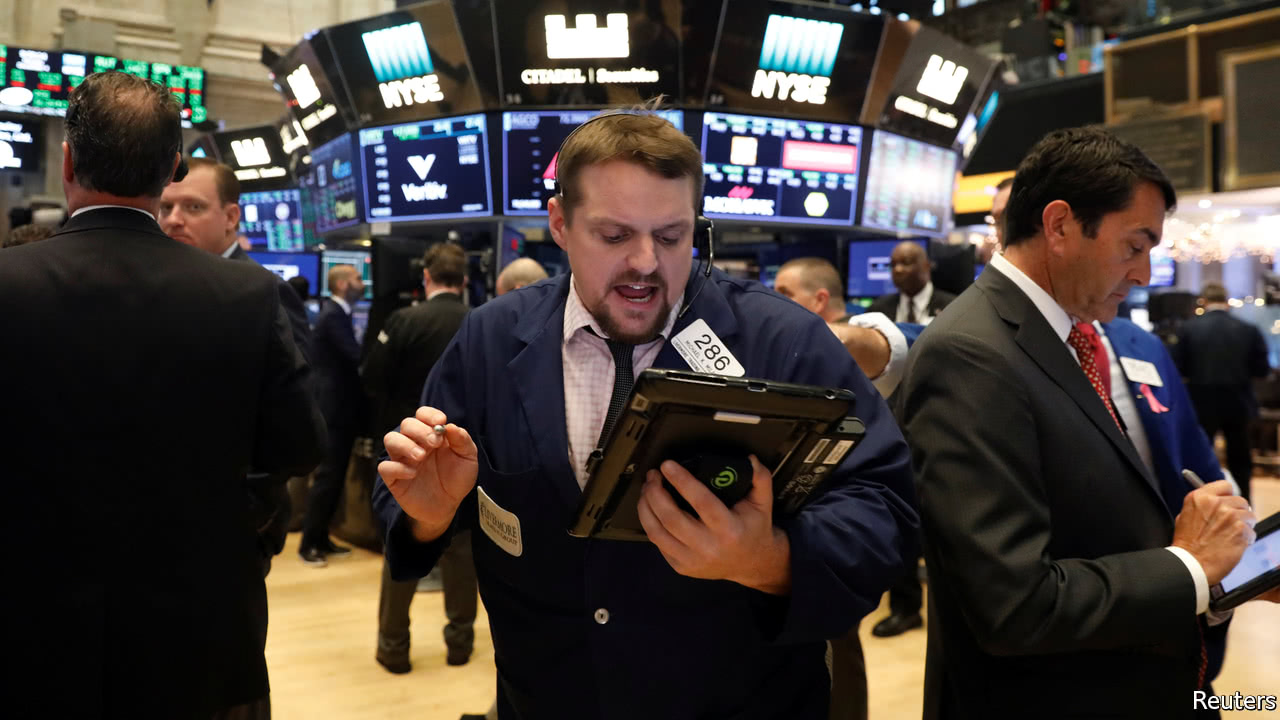
FOR seasoned bankers and starry-eyed entrepreneurs alike, doing an IPO, or initial public offering, is synonymous with the very idea of taking a firm public. No wonder, then, that the decision by Spotify, a music-streaming service, to opt for an unconventional alternative called a “direct listing” has prompted debate. Instead of paying investment banks hefty fees to arrange an IPO, Spotify plans to have existing shares simply switch one day to being tradable on the New York Stock Exchange (NYSE).
IPOs themselves have become rarer, as startups such as Uber and Airbnb have chosen to raise money through private markets instead. Although there was an uptick in the number of IPOs in America in 2017—108, compared with 74 in 2016—the average number of IPOs has remained at around 100 annually since 2000, compared with over 300 in the course of the two previous decades. But until now no big company had contemplated direct listing as an alternative. The structure has been seldom used: in America, examples include a few vehicles for investing in property and a handful of small biotech firms. Among American exchanges, only NASDAQ has so far allowed such listings; the NYSE has proposed a change to its own rules that would allow them (it is still to be approved by regulators).
-
Retail sales, producer prices, wages and exchange rates
-
Foreign reserves
-
Why commodity prices are surging
-
Why a judge’s injunction on DACA is unlikely to stand
-
Teenagers are becoming much lonelier
-
The Supreme Court considers the scope of automobile privacy
An IPO contains many elements: investment banks drum up investor interest through a roadshow, sign up new investors, set a target price, line up blocks of shares from existing shareholders, underwrite new share issuance and smooth trading on the first day by guaranteeing a floor for the share price. A direct listing comes with no such luxuries. With no new share issuance, all shares that come to market must come from existing shareholders. But with no special provisions for large blocks of trades, they will only be able to sell what the market will bear; a large sell-off would cause the price to plummet. And if too few shareholders sell, the first days may see thin and volatile trading, resulting in strange pricing for the shares.
Why would Spotify go for the direct option? The savings on underwriting fees are not trivial. Perhaps more important is that without the 3-6 month lockup period typically seen in IPOs (presold blocks aside), existing holders will be free to sell shares when they like. In the meantime, they need not fear their holdings being diluted. Spotify may think its well-known brand does not need a full roadshow. The onerous terms of a $1bn loan Spotify took from TPG and Dragoneer, two investment firms, may have also played a part. The loan not only became dearer the longer Spotify stayed private; it also included an exchange of debt into equity at a level tied to an IPO price.
Others may follow in Spotify’s path. The publicity around direct listing has prompted “intense interest”, says Anna Pinedo of Morrison Foerster, a law firm. A senior IPO banker insists that direct listing is a “niche” suitable only for the small subset of private companies that already have a large number of shareholders. But some privately held tech companies do indeed have big shareholder bases and brands as well-known as Spotify’s; if they decided they did not need new capital as part of listing, the direct option could fit the bill. If Spotify’s listing goes smoothly, IPOs may no longer be the only game in town.
Source: economist
Spotify opts for an unusual way of going public